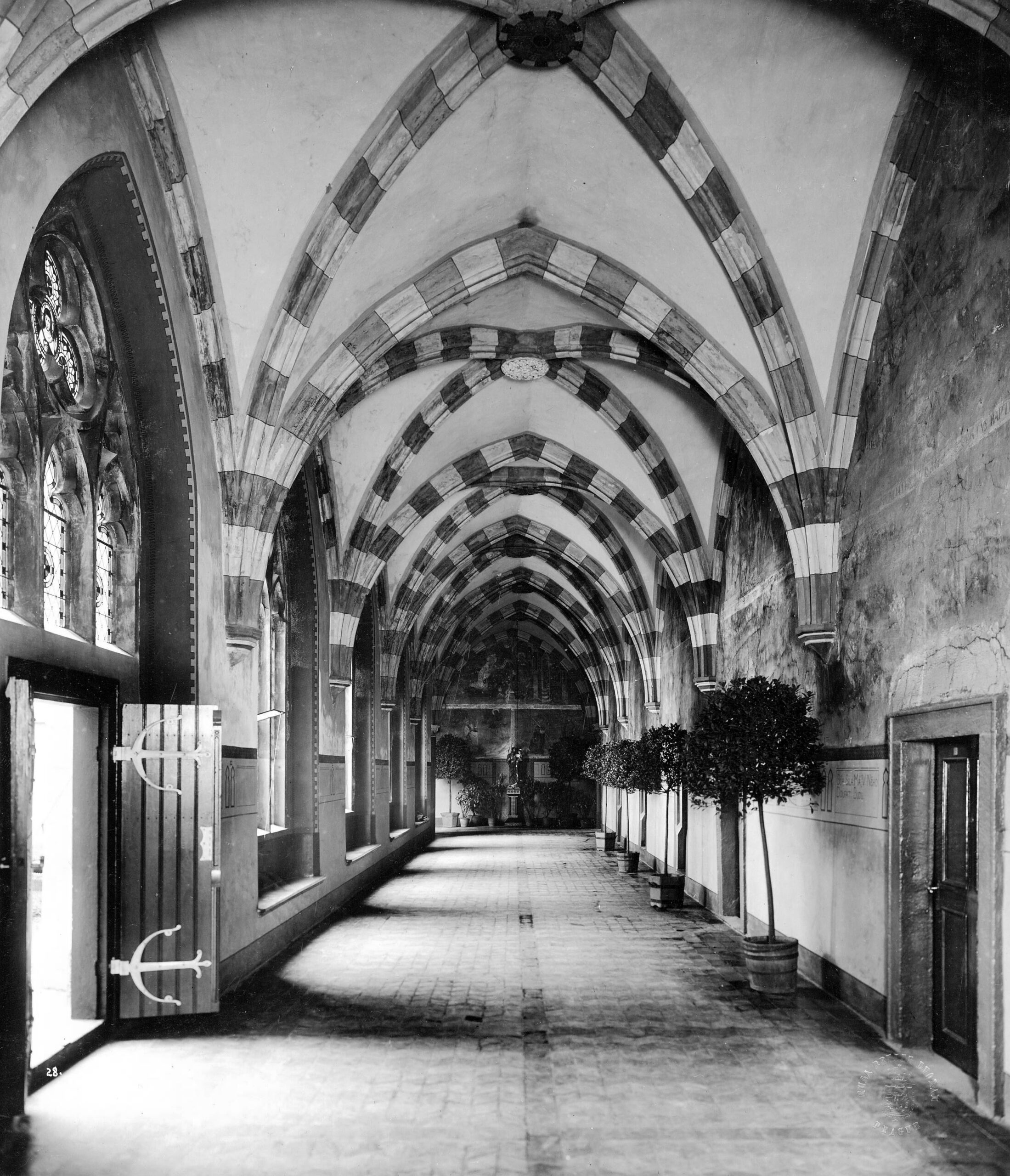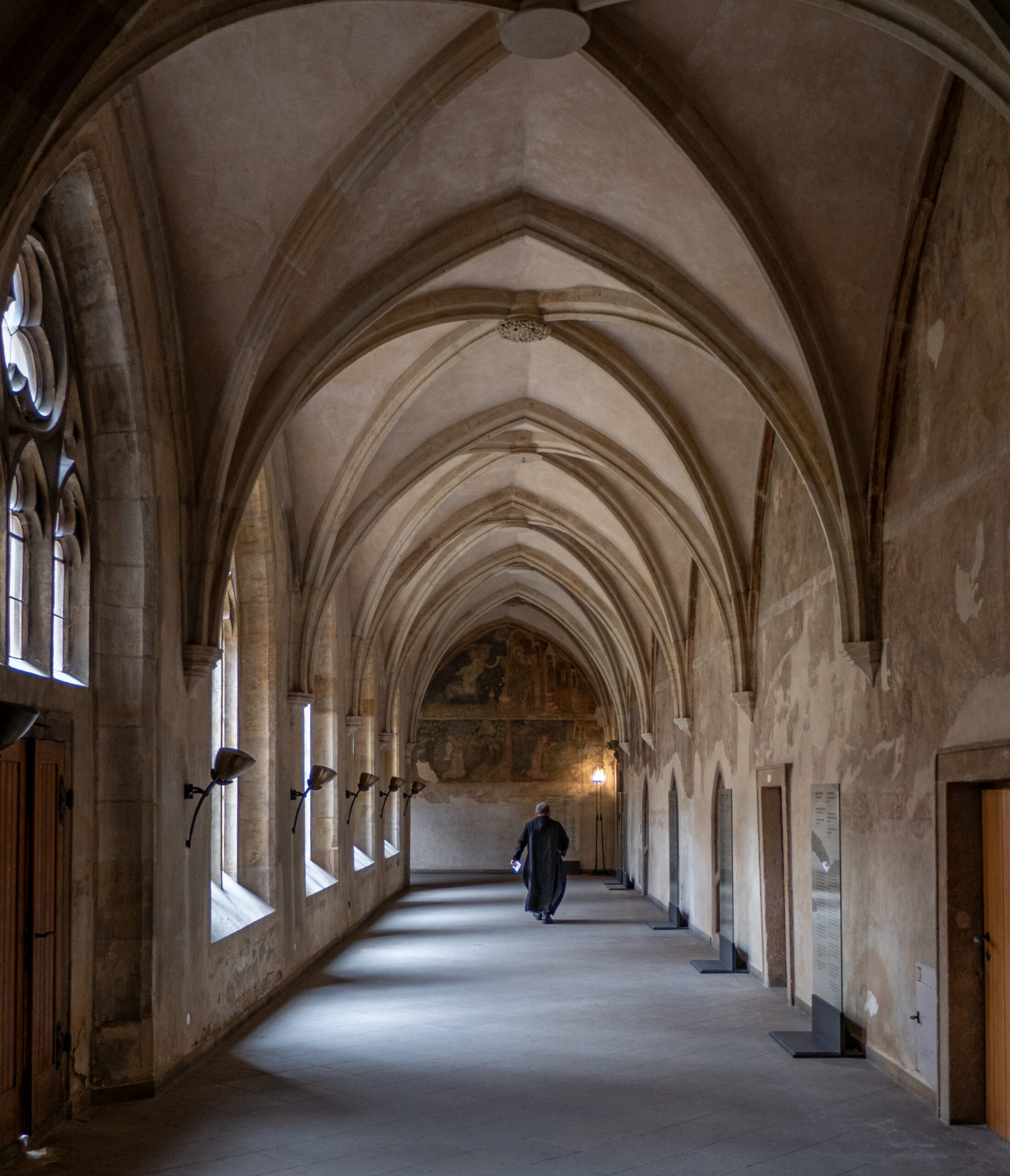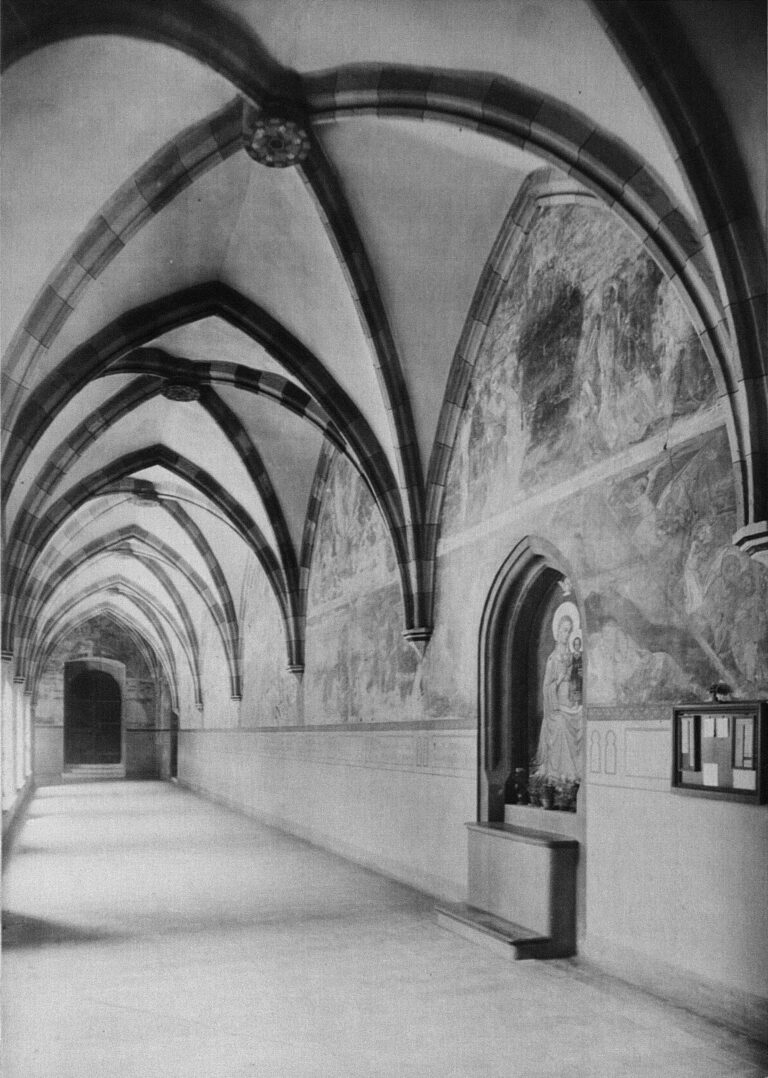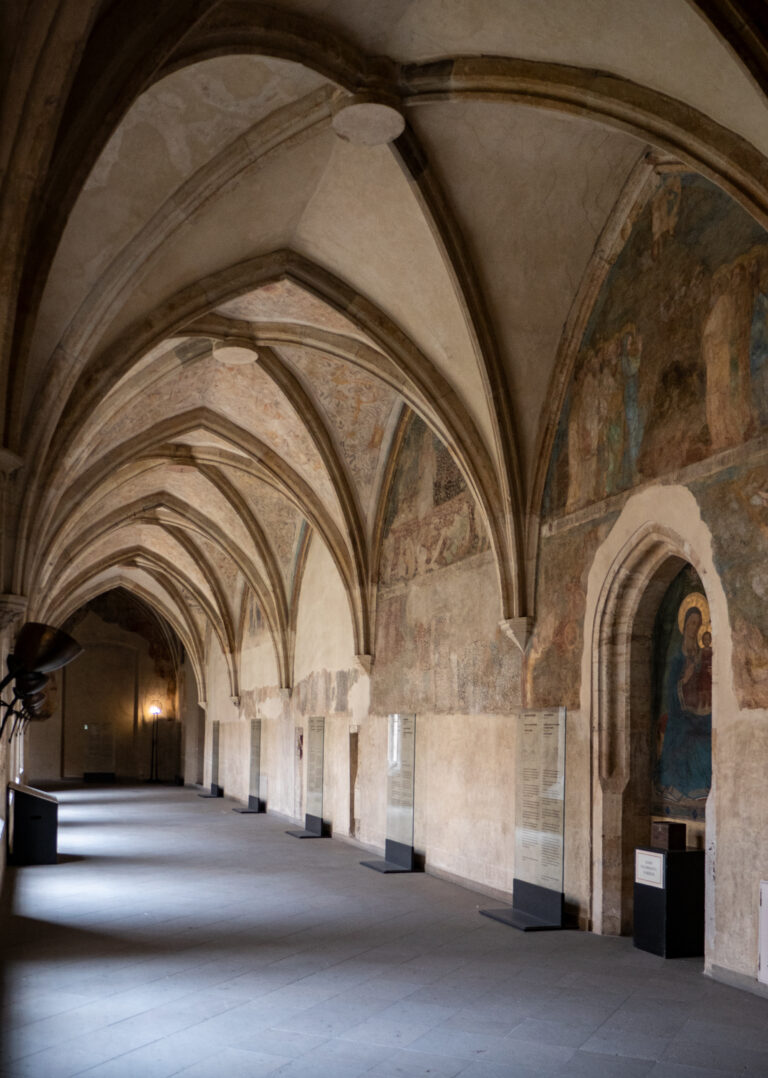Cloister
The cloister is particularly impressive for the medieval character preservation. The original fresco decoration contained 90 scenes from the Old and New Testaments, including the now non-existent murals of the Imperial Chapel.
The fresco cycle begins in the cloister’s southeast corner and it was laid out in order for the Passion scenes to be located in the east wing chapel, the so-called Imperial Chapel. The symbolism of the murals is very complex, one can find their relation to the liturgical year or an expression of Christian virtues (e.g. the Jacob's ladder depiction in the east wing recalls the virtue of humility).
The south wing accentuates the figure of the Virgin Mary in the prophetic visions and in the well-preserved Annunciation scene. The west wing is dedicated to Christ's childhood and preparation for public life. The north wing describes his public life, and above all, Christ's miracles (the feeding of the multitudes, the miraculous healings and the resurrection). The greatest symbolic importance of the entire building was in the east wing dedicating to the Passion of Christ.
The best-preserved scenes are located in the cloister‘s north wing. In this part, there is a greater spacing of the vaulted bays than in the other wings that gave the painters a room for richer compositions. The combination of the cloister‘s vaulting system and the church south aisle is the reason for the rhythm change.
...you can travel back through time by swiping
View into the cloister
...you can travel back through time by swiping
 HISTORY
HISTORY
 PRESENT
PRESENT
Did you know that...?
 HISTORY
HISTORY
 PRESENT
PRESENT
The decoration was also influenced by earlier periods: the east wing vault ornaments are of Renaissance origin, and the enthroned Madonna and Child Jesus was painted by Beuron artists after 1880 onto the walled portal. Its model is not too far in time from the original frescoes. It is an altarpiece from 1433 by Fra Angelico da Fiesole workshop that still adorns the monastery of San Marco in Florence.


